Patients embraced virtual care and communications at very high rates in the first months of the pandemic, and want to continue to use telehealth platforms after the pandemic ends.
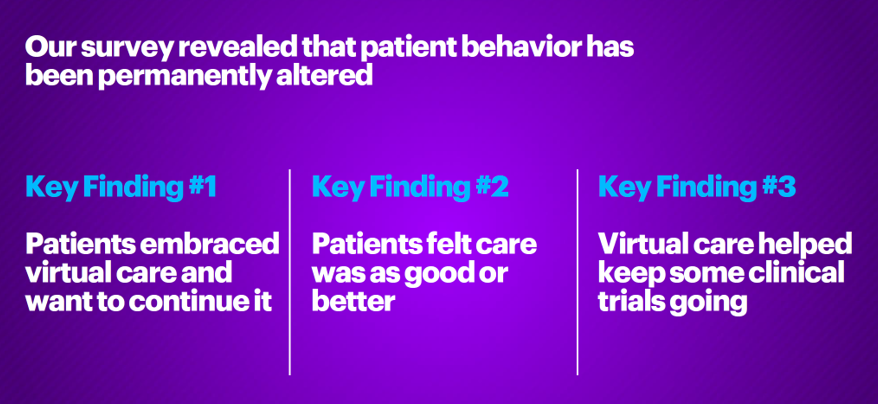 The new era of virtual care has begun and is here to stay, Accenture expects in its latest look at How COVID-19 will permanently alter patient behavior, a patient survey conducted in May 2020.
The new era of virtual care has begun and is here to stay, Accenture expects in its latest look at How COVID-19 will permanently alter patient behavior, a patient survey conducted in May 2020.
Accenture polled 2,700 patients around the world, 450 participants each from China, France, Germany, Japan, the U.K., and the U.S. Patients represented one of three conditions, with one-third each managing cardiovascular, immunology/rheumatology, and oncology.
Topline, consumers “faced difficult choices,” Accenture notes in the report, choosing whether and how to continue their personal health care seeking to limit their risks of exposure to COVID-19.
Patient behavior has permanently changed, the survey data demonstrates through three key findings:
- Patients embraced virtual care and want the option to use it ongoing
- Patients perceived care was at least as good or better than traditional face-to-face encounters, and
- Virtual care bolstered ongoing clinical trials, a large focus of this study.
As other research in the Age of the Coronavirus Pandemic has found, a majority of patients deferred or cancelled treatment — in Accenture’s study, that majority was 70%, citing first their concern about limiting possible exposure to COVID-19 versus getting treatment (36% of those who avoided treatment); 28% saying their health care provider could not keep appointments due to COVID-19 restrictions; 27% afraid of leaving the house to get their treatment; and, 21% having transportation problems getting to the provider’s office in the pandemic.
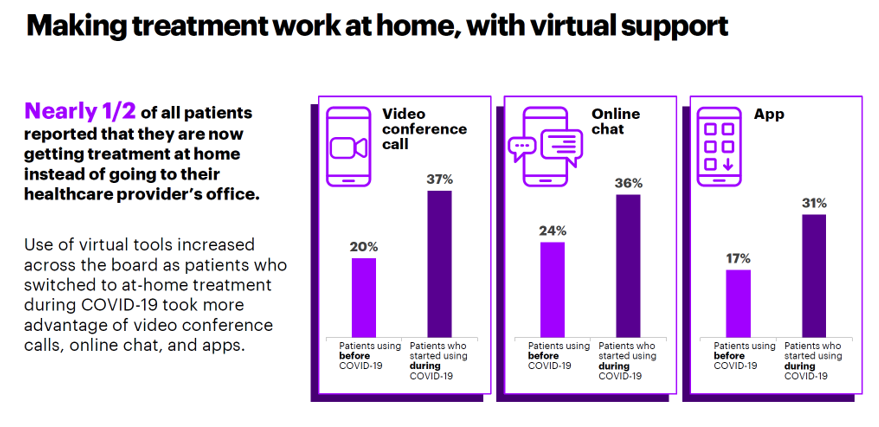 The new patient workflow became making treatment work at home with virtual support, the second graphic illustrates. About 1 in 2 patients now receive treatment at home instead of going to a provider’s office, using virtual tools like video conference calls (“Zoom-ing” for medical care), online chat, and mobile health apps downloaded on smartphones. Fully one-third of patients starting using each of these 3 telehealth modalities during COVID-19.
The new patient workflow became making treatment work at home with virtual support, the second graphic illustrates. About 1 in 2 patients now receive treatment at home instead of going to a provider’s office, using virtual tools like video conference calls (“Zoom-ing” for medical care), online chat, and mobile health apps downloaded on smartphones. Fully one-third of patients starting using each of these 3 telehealth modalities during COVID-19.
Not only did these patients try out telehealth platforms, but 60% said that based on their experiences, they want to use these applications more to communicate with providers and self-manage their conditions.
Patients tried new devices and liked them, Accenture learned. Over 90% of patients using a new device or app rated the experience “good or excellent” and wanted to continue to use them.
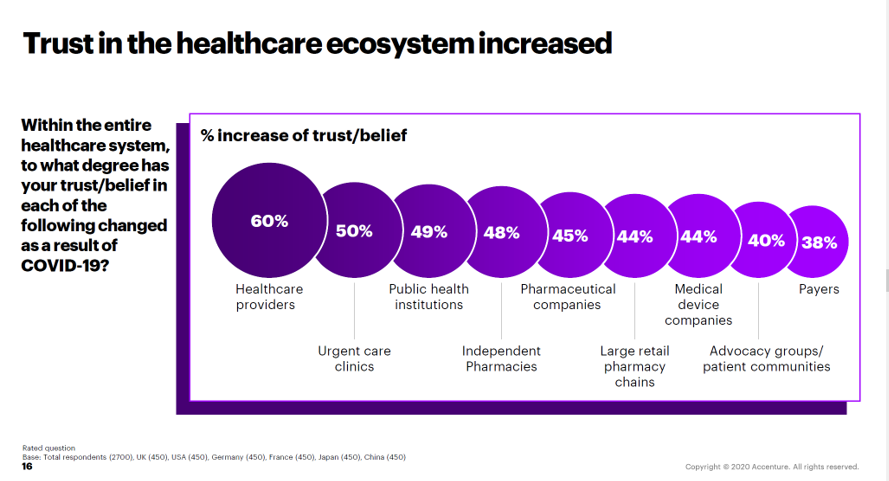 What drove patients’ positive experience with telehealth technologies was a better, more personalized experience, a quicker response, and more convenient access through new communication channels.
What drove patients’ positive experience with telehealth technologies was a better, more personalized experience, a quicker response, and more convenient access through new communication channels.
Across all three medical conditions studied, videoconferencing, in particular, garnered relatively rave reviews among patients using the platform for the first time.
Patients managing cardiology and vascular diseases expressed the highest praise for quality of care using videoconferencing (97%, virtually all patients polled, saying quality care was at least as good or better than face-to-face care. 90% of oncology patients rated videoconferencing meet-ups at least as good or better, as well as 86% of patients dealing with rheumatology, immunology, and inflammatory conditions.
In the wake of the coronavirus pandemic, note how patients’ trust and belief in the healthcare ecosystem has grown — and especially for health care providers. Six in 10 patients said their trust/believe in health care providers increased as a result of COVID-19, followed by 50% of patients finding increased trust in urgent care clinics, 49% in public health institutions, 48% in independent pharmacies. 45% in pharmaceutical companies, and 44% in large retail pharmacy chains.
Bottom-line, by using technology to support communication and care, Accenture explains, health care providers were able to maintain and often improve the care experience.
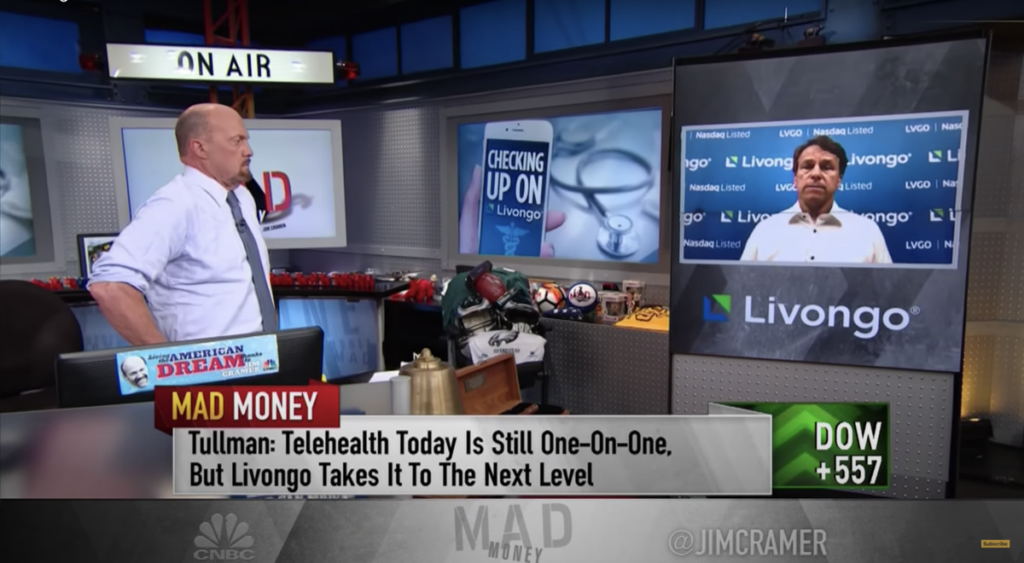 Health Populi’s Hot Points: Accenture’s findings bode well for the maturing telehealth platform companies like Amwell, Doctor on Demand, and Teladoc, among others who have garnered major multi-million investments in the second quarter of 2020.
Health Populi’s Hot Points: Accenture’s findings bode well for the maturing telehealth platform companies like Amwell, Doctor on Demand, and Teladoc, among others who have garnered major multi-million investments in the second quarter of 2020.
Other companies bolstering virtual and holistic, integrated primary and specialty care have also been doing well, accelerating innovation and new health-tech adoption in the Age of Corona.
One company benefiting from this pandemic moment has been Livongo, whose stock price broke a $100-a-share price the second week of July. Glen Tullman, founder and CEO of Livongo, explained in a recent interview with Mad Money’s Jim Cramer that, “What we’re doing is a step beyond telehealth and remote monitoring. We’re calling it Consumer Directed Virtual Care.”
Livongo’s approach, and others in this next-generation of consumer-facing virtual care tools, addresses the three patient-satisfaction drivers Accenture’s study revealed: a more personalized experience, quicker response, and more convenient access through new communication channels.
We should expect COVID-19 to continue to accelerate this trend to “consumer-directed virtual care” and the emergence of the hospital-at-home care. For me, that’s not a wild card or uncertainty in my scenario planning work these days: it’s a solid certainty and expectation.


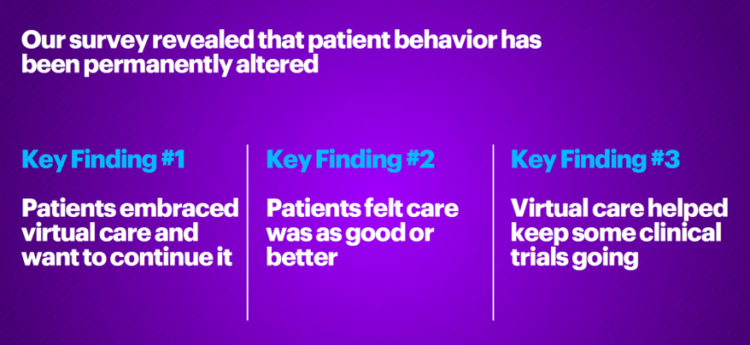


 Interviewed live on BNN Bloomberg (Canada) on the market for GLP-1 drugs for weight loss and their impact on both the health care system and consumer goods and services -- notably, food, nutrition, retail health, gyms, and other sectors.
Interviewed live on BNN Bloomberg (Canada) on the market for GLP-1 drugs for weight loss and their impact on both the health care system and consumer goods and services -- notably, food, nutrition, retail health, gyms, and other sectors. Thank you, Feedspot, for
Thank you, Feedspot, for  As you may know, I have been splitting work- and living-time between the U.S. and the E.U., most recently living in and working from Brussels. In the month of September 2024, I'll be splitting time between London and other parts of the U.K., and Italy where I'll be working with clients on consumer health, self-care and home care focused on food-as-medicine, digital health, business and scenario planning for the future...
As you may know, I have been splitting work- and living-time between the U.S. and the E.U., most recently living in and working from Brussels. In the month of September 2024, I'll be splitting time between London and other parts of the U.K., and Italy where I'll be working with clients on consumer health, self-care and home care focused on food-as-medicine, digital health, business and scenario planning for the future...